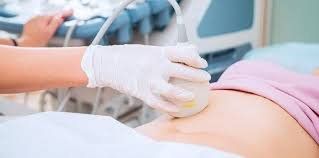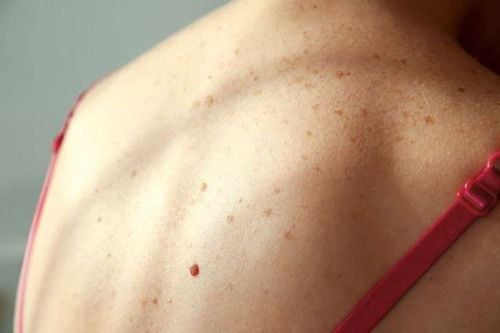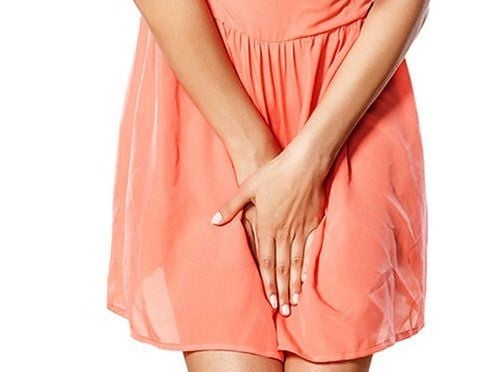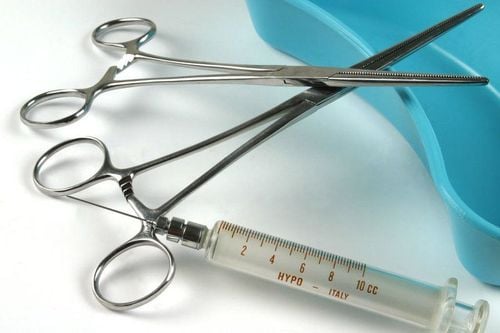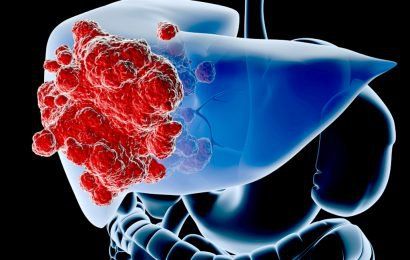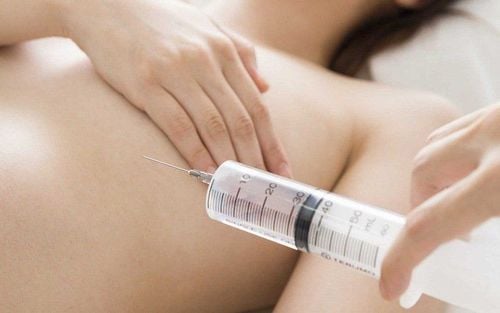This is an automatically translated article.
A nail biopsy is a safe and useful diagnostic procedure for many nail disorders, when conventional clinical and laboratory methods fail to provide a diagnosis.1. What is a nail biopsy?
Nail biopsy is surgery to remove part of the nail plate and soft tissue under the nail for histopathological examination.Nail biopsies are performed to accurately diagnose nail unit pathology by a simple and safe procedure, while avoiding pain or permanent dystrophy. To this end, due attention should be paid to the technique and site chosen for nail biopsies. If a nail biopsy is done properly, scarring can be completely avoided.
2. When is a nail biopsy indicated?
It is of paramount importance to select the appropriate patient. An ideal patient is one without typical skin lesions for easier diagnosis. Often, routine nail examinations such as directoscopy, fungal cultures, and imaging techniques may not confirm the suspected diagnosis, requiring a nail biopsy.Surgery is indicated for diseases such as: Tumor under the nail (subungual vascular tumor, melanoma...) or nail color change with suspicion of cancer.
At the same time, the patient must not have any contraindications to nail surgery. Some patients with systemic co-morbidities such as: Diabetes with neurological changes, peripheral vascular disease, arterial insufficiency,... need careful care because it can affect vascular system and wound healing process after intervention.
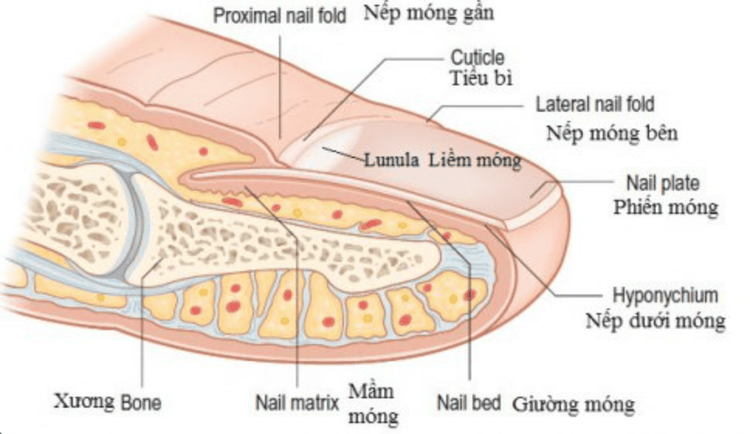
Sinh thiết móng là một thủ thuật chẩn đoán rối loạn ở móng
3. How is a nail biopsy done?
Like any other dermatological surgical procedure, written consent is required from the patient prior to performing a nail biopsy. At this point, the patient needs to be explained about the procedure, preparation, and post-biopsy care. In addition, patients should also be aware that even a nail biopsy sometimes cannot confirm the diagnosis in all cases.For preoperative preparation, effective local anesthesia is essential because the fingernail or toenail is a very sensitive structure with a large number of free nerve endings. Most apprehension about a nail biopsy, especially a nail, is due to the pain associated with the procedure, and effective anesthesia can make the patient more cooperative. Before administering anesthesia, a history of allergy to lidocaine, bupivacaine or parabens should be checked by intradermal injection first. At the same time, always evaluate the history of heart disease including arrhythmias, conduction block.
The next important step after the anesthetic is sufficiently effective is the application of the tourniquet principle. This helps the surgical field to limit bleeding, and to intervene in biopsies of all necessary tissue samples.
To minimize potential scarring after a nail biopsy, the operator must have practical knowledge of nail unit anatomy. At the same time, the process also requires the use of certain specialized tools, which make the job precise and easy, including a nail splitter (used to separate the nail plate from the nail bed). ) and nail splitter (a heavy-duty tool for cutting even thick nail plates and at the same time preventing damage to the underlying nail bed). In addition to these two basic tools, a nail biopsy requires a sharp biopsy perforator, scissors, and forceps.
The nail biopsy site chosen also depends on the type of lesion directed because the changes seen in the nail plate (superficial or internal) are in fact the result of localized pathology to the substance. background below.
Therefore, for nail pitting or nail inflammation, a nail biopsy should be obtained from the substrate and not from the nail itself. Similarly, for abnormal longitudinal pigment bands on the nail, a diagnostic biopsy is obtained from the origin of the band in the stroma (visible only after retraction of the proximal nail fold). Meanwhile, the histopathological features of onychomycosis, subcutaneous hyperkeratosis will require a nail bed biopsy.
After obtaining the necessary piece of nail tissue for histological examination, the finger or toe will be disinfected, bandaged, removed, and cared for as a wound for the following days until the new nail completely covered.
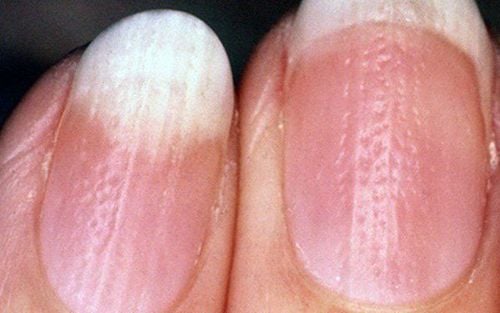
Đối với rỗ móng, sinh thiết móng là cần được lấy từ chất nền
4. Complications of nail biopsy
Common complications of nail biopsies, both nail biopsies or toenail biopsies, are bleeding and secondary infection.The nail is a very vascular structure and techniques to minimize bleeding can help improve the diagnostic outcome. Besides, the use of prophylactic antibiotics when doing invasive procedures such as nail biopsies should be prioritized, especially in tropical climates like ours. In some cases, a nail biopsy can lead to scarring of the nail that can lead to nail fungus later.
In addition, there are more dangerous complications such as: Deformity of the nail, reduction in nail width, misalignment of the regrowth of the nail or growth of lateral spinous nodules that can only occur with more radical procedures such as birth control. nail design.
In a nutshell, a nail biopsy is a procedure that is not used often; but once indicated, this is often the only clue left to the diagnosis. Prior to the procedure, the dermatologist should adhere to the optimal biopsy and subsequent processing procedures to obtain maximum histopathological information. Properly performed nail biopsies can help minimize complications and optimize treatment outcomes for nail diseases in general.
Please dial HOTLINE for more information or register for an appointment HERE. Download MyVinmec app to make appointments faster and to manage your bookings easily.




